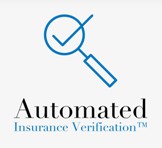
Certified Risk Managers LLC
Certified Risk Managers.com
AUTOMATED INSURANCE VERIFICATION® SYSTEM
The Myth of "Following Form" Excess Limits Policies
 |
Certified Risk Managers LLC Certified Risk Managers.com AUTOMATED INSURANCE VERIFICATION® SYSTEM
The Myth of "Following Form" Excess Limits Policies |
|
Useful Information |
The Myth of "Following Form" Excess Limits Insurance Policies
by
Robert J. Marshburn, CRM, CIC, ARM, CRIS, CISC
Founder & CEO | Certified Risk Managers LLC
Most so called "Following Form" Excess Insurance policies that provide additional higher limits after exhaustion of the underlying policies are not true following form...
With Excess policies, even those that claim to be a "Following Form" policy, you need to work through the entire policy to determine the extent to which it follows the underlying policy, any differences, and how those differences affect the desired coverages to comply with your Contract requirements.
Most Excess policies have additional provisions that apply instead of the underlying policy in case of a conflict! Carefully check if the following are the same as the Underlying Policy:
1. General Provisions – the correct underlying policy, limits, and effective dates are the same as listed in the Excess Policy
2. Defense provisions – inside or outside limits
3. Is defense an obligation; or the "right, but not the duty" to defend
4. Are Additional Insureds on the primary covered on the Excess
5. Must Additional Insureds be advised or endorsed on to the Excess
6. What about Automatic Additional Insureds when required by Contract
7. Is the Excess Policy Primary & Non-Contributory for an Additional Insured
8. Is there the same coverage for Indemnity obligations assumed by contract as the primary policy
9. Are the Contractual liability provisions the same as the underlying policy
10. Is the "Insured Contract" Definition the same or is it modified
11. Has the definition of "Occurrence" been modified
12. Is there a "Prior Work" limitation or exclusion
13. Does the primary/underlying policy have a Self Insured Retention (SIR) that can only be satisfied by the named insured that, if not paid, would prevent triggering the Excess
14. Are there any other exclusions or limitations that are part of, or have been added to, the Excess Policy compared to the primary CGL or underlying policy layer
•
It is much easier to spot these changes on the ISO CGL policy since the policy is standardized and any changes from the unmodified policy must be made by endorsement. There is no "standard" Excess Policy in the industry and limitations or exclusions can be in the text of the policy itself and not only by endorsements! ISO has Excess (CX 00 01) & Umbrella (CU 00 01) policy forms, but they are not the industry "standard" like the CGL.
•
True "following form" Excess policies will only be 4 pages or less! If more, you must carefully wade through all of the pages to analyze and understand the differences! Some are twice as many pages as the entire standard ISO CGL policy.
If a "Following Form" Excess Policy is not a true "Following Form", it can sometimes be endorsed back to be such with endorsement language similar to the following example from an actual excess policy:
FOLLOW FORM ENDORSEMENT
policy will follow the exact warranties, terms, conditions, exclusions and limitations contained in the Followed Policy listed in the DeclarationsIt is agreed that this
Some following form endorsements will say something similar to the above and then add "...except for any other endorsement added to this policy" or other similar language.
If the Excess Policy is not 4 pages or less, or does not have a "clean" following form endorsement, it will no doubt read similar to the following actual example. The following was on an Excess Policy with an additional Exclusion for PD liability. The Excess Policy is NOT a TRUE Following Form:
On Page 5 of the excess policy it states:
Exclusions
The EXCLUSIONS sections of
the "controlling underlying insurance" are made part of this policy. If an inconsistency or contradiction exists between an Exclusion of this policy and anExclusion of the "controlling underlying insurance" the Exclusion of this policy will apply.
However, in no case
will coverage be excluded by the "controlling underlying insurance" and not excluded by this policy.
Translation: The broader exclusion of either policy is what will apply!
Many other examples are out there. Be very careful!
Contract language
requirements must be carefully crafted for true following form Excess policies.
Our Proprietary Automated Insurance Verification® Risk Management System has Enhanced Verification Provisions that helps Automatically Verify, Expose, Correct, and Activate Coverage Compliance with your Contract Insurance Coverage Requirements.
We do a considerable amount of client consulting and seminars on these and related issues and would be happy to consult with you or any of your clients. We are the Risk Management Consultants for Risk Managers and Brokers. If you would like information on how our services can benefit your business, please contact us.
Home I Biographical Profile I What we do I Consulting Services I Useful Information I Consulting Options I Contact Us
Automated Insurance Verification® is a Registered Trademark with the US Patent Office for our Proprietary Automated Insurance Coverage Compliance Verification System
© Copyright 1999-2024 Certified Risk Managers LLC, CertifiedRiskManagers.com. AutomatedInsuranceVerification.com. All Rights Reserved.
May not be used or quoted without written permission.